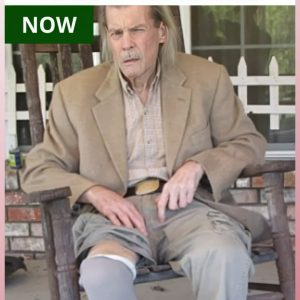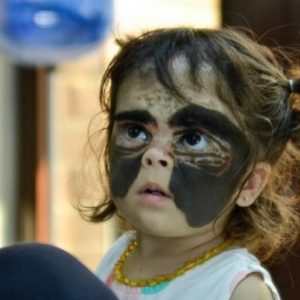Before she ever stepped in front of a camera, Meg Foster was already making a name for herself on stage. But just as her screen career began to take off, one unexpected casting shakeup nearly brought it all to a halt. Years later, her return reminded everyone of what she had — and hadn’t — left behind.
Foster became a standout during the golden age of television, earning roles in some of the most-watched shows of the 1970s and ‘80s. Her talent was obvious, but it was her piercing blue eyes that truly turned heads — and would continue to do so throughout her career.
Early Life and Theater Roots
Born May 10, 1948, in Reading, Pennsylvania, Meg grew up in Rowayton, Connecticut, one of five siblings. She had an early love for the arts, which led her to New York City’s prestigious Neighborhood Playhouse, where she trained with legendary acting coach Sanford Meisner.
On stage, she played characters like Miss Hardcastle in She Stoops to Conquer and The Blonde in Between Two Thieves — roles that gave her a strong foundation and helped sharpen her craft. In 1969, she transitioned to television with a small part in NET Playhouse, kicking off a new phase of her career.
Rising Star on TV
Throughout the ‘70s, Foster built her resume with guest spots on popular shows like Barnaby Jones, The Six Million Dollar Man, and Hawaii Five-O. Then in 1979, she landed a major role as Hester Prynne in The Scarlet Letter, a performance that drew critical praise.
At the time, the gig was a godsend. “I couldn’t get a job,” she admitted in a 1979 interview. “I kept praying for something that would feed me creatively.” After over a year of career frustration, the part felt like a turning point.
Despite her talents, Foster also battled insecurity about her looks. “I’d love to be taller, to have longer legs… but I remind myself, I’m the only Meg. I have something different to offer.” She did — though not always in the way she might’ve hoped.
Cagney & Lacey and the Role That Slipped Away
By the early ‘80s, Foster was gaining traction. CBS cast her as Christine Cagney in the original version of Cagney & Lacey, a trailblazing police drama led by two strong women. She replaced Loretta Swit, who’d originated the role in the pilot.
It should have been her big break. But after the initial season, CBS abruptly replaced her with Sharon Gless. The decision blindsided Foster and baffled fans. No clear explanation was given at the time, and speculation ran wild. Rumors spread that she was “difficult,” though colleagues said the firing hit her like “being hit by a truck.”
Later, the network claimed it was about finding “better balance” for the show. But the damage had been done — Foster’s once-promising TV career hit a stall.
Still, her unforgettable eyes — dubbed “the eyes of ‘79” by Mademoiselle magazine — remained her calling card. Ironically, some producers thought they were “too distracting” and asked her to wear contact lenses to tone them down. Foster didn’t see the fuss: “I don’t look at my eyes, I see through them.”
A New Chapter in Film
After Cagney & Lacey, Foster pivoted to film. In 1987, she took on the role of Evil-Lyn in Masters of the Universe, a cult favorite that gave her a new kind of visibility. A year later, she starred in John Carpenter’s They Live, delivering one of her most iconic performances as the mysterious and morally ambiguous Holly.
She kept the momentum going with Stepfather II and Blind Fury in 1989, both co-starring Terry O’Quinn. The late ‘80s proved she wasn’t going anywhere — and that she could handle darker, edgier roles with ease.
Throughout the ‘90s, she returned to TV with roles in Quantum Leap, ER, Star Trek: Deep Space Nine, Murder, She Wrote, and Sliders. Even when she wasn’t headlining, her performances stood out for their depth and presence.
Life Away from Hollywood
Off-screen, Foster lived a very different life. Married to actor Stephen McHattie, she settled into suburban Los Angeles with their son Christopher. She focused on family, home-cooked meals, and a quieter rhythm of life. “I cook every night,” she said. “I taste as I go.”
Their Topanga Canyon home had a backyard garden, once full of strawberries. After heavy rains one year, they shifted focus to saving trees. Foster also loved trading recipes with her older sister Gray, who lived near Seattle.
Despite her Hollywood pedigree, Foster remained grounded. “You have to keep perspective,” she said. “This business can make you lose your values fast.”
She spoke openly about parenting too. Recalling a tough day with her then-seven-year-old son, she told him, “I want to be a great mom, but sometimes I have bad days.” His reply? “Nobody’s perfect, Mommy.”
Slowing Down, Not Stopping
By the 2000s, Foster’s on-screen appearances slowed. Between 1999 and 2011, she took only a few roles. But starting in 2011, she returned to acting more consistently — appearing in projects each year, including horror films and indie productions. Her name still drew interest, and her fans remained loyal.
Even into her 70s, Foster’s natural beauty continued to turn heads. Admirers praised her for aging gracefully — without cosmetic surgery or heavy makeup. “She’s stunning, even now,” one fan wrote. Another said, “Her eyes are unreal.”
Meg Foster’s Legacy
At 76, Meg Foster remains a respected figure in the industry. Her story is one of resilience, quiet strength, and doing things on her own terms. While she never chased fame for its own sake, she left a mark with every performance — whether as a stage-trained actress, a cult film icon, or a TV star whose career rebounded after a tough break.
Through it all, she stayed uniquely herself — and that’s exactly why people still remember her.





